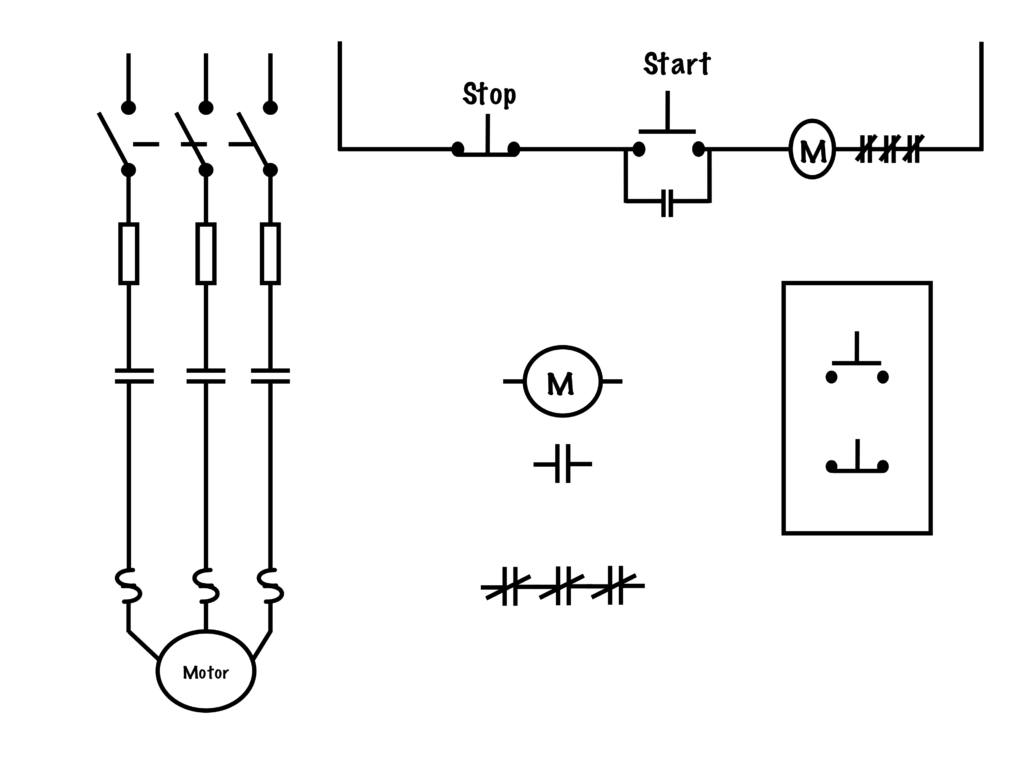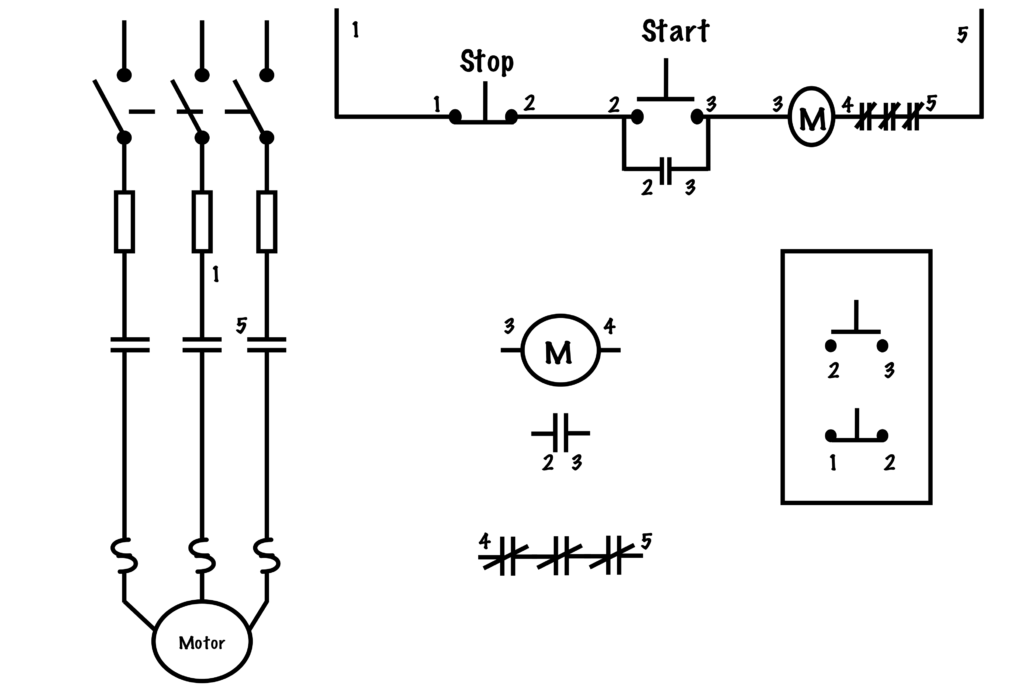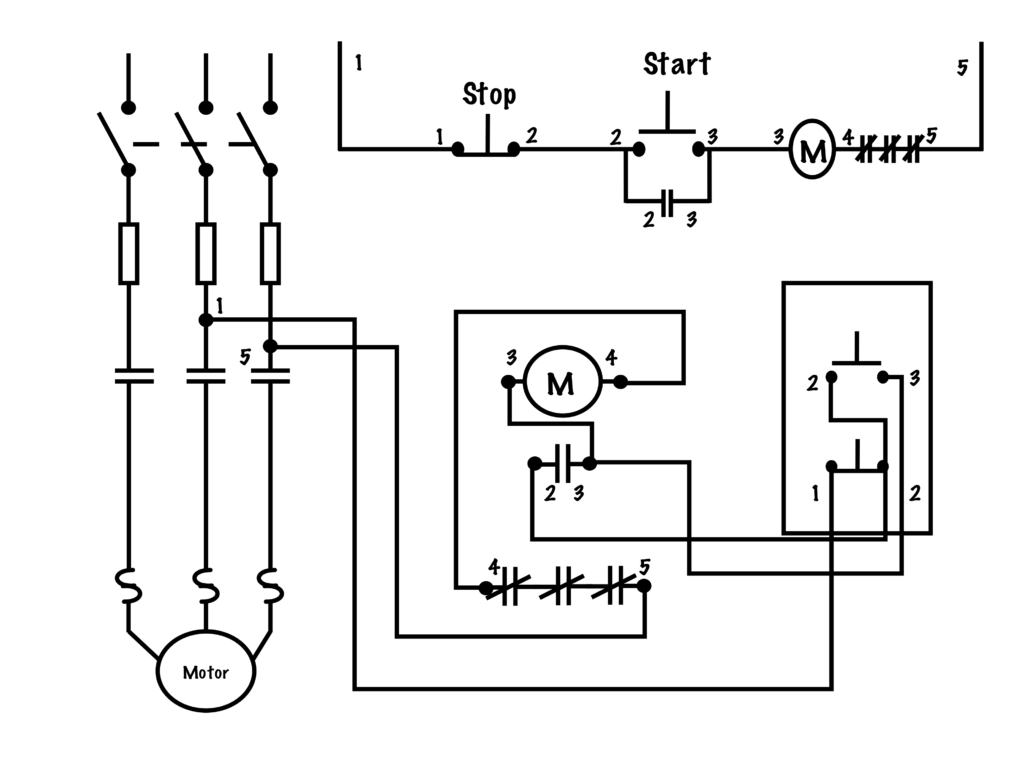Diagrams
22 Transferring From Schematic to Wiring Diagram for Connection Purposes
A completed wiring diagram can help with the physical installation of wires. To aid in the development of a wiring diagram, it is useful to start with the circuit’s schematic diagram and the numbering system.

Consider the figure above. It includes a three-wire schematic diagram as well as the equivalent control components and the power circuit. In this example, there is no control transformer, so we will be taking control power directly from the line. The control circuit power is taken from the load side of the overcurrent devices and the line side of the power contacts.
Once the schematic diagram has been properly numbered, each device will have two numbers identifying it, one wire on the line side, and one on the load side. For example, in a three-wire circuit, the stop button gets wires 1 and 2, while the start button and the holding contact each get wire numbers 2 and 3 (hence the term “2-3 contact“).

Once all the devices have been properly numbered, we simply play connect the dots. Each point that shares the same number is electrically common and needs to be connected together. Use straight lines and only connect wires at terminal points on equipment.

Make sure that all connections happen at termination points or “terminal to terminal.” In practice, we usually only connect a maximum of two wires to any one point and never make a “free-air splice.”
The figure above illustrates each of the strengths that wiring and schematic diagrams have: Schematic diagrams are easy to read and used to logically troubleshoot a circuit, while wiring diagrams show how equipment is physically connected together.
https://video.bccampus.ca/id/0_s797qszu?width=608&height=402&playerId=23448552
A diagram shows how equipment is laid out and the connections between them. This type of diagram shows the physical relation of all devices in the system, the conductor terminations between these devices, and are commonly used in motor control installations. Also known as a connection diagram.
A diagram that shows how a circuit works logically and electrically. It uses symbols to identify components and interconnecting lines to display the electrical continuity of a circuit. It is often used for troubleshooting purposes. Also known as a ladder diagram.
Used to convert between wiring and schematic diagrams, the numbering system is a method of identifying and labelling each electrically common point in a circuit. Two wires are considered electrically common if they share an electrical connection with no switches or loads between them, and so would be assigned the same number in the diagram.
In contrast to the control circuit, the power circuit provides the large values of voltage and current used by the motor itself. Must be equipped with overcurrent and overload protection, and horsepower-rated contacts in the control gear equal to the voltage and current ratings of the motor.
In contrast to the Power Circuit, the Control Circuit consists of inputs, in the form of switches, pushbuttons or pilot devices, which when activated, can either directly, or through a magnetic motor starter, energize a load. The Control Circuit often operates at a lower voltage than the Power Circuit for safety and ease of installation.
A sharp and fast rise in current over a short period of time (fractions of a second) where the value of current is far greater than the nominal line current.
Also known as a "maintaining" contact, these are the normally open contacts of a magnetic starter that are connected in parallel with the start button in a three-wire control circuit. When using the conventional NEMA numbering system, they get wire numbers "2" and "3."
Referring to two or more points in a circuit which have no loads or switches between them and have no potential difference between them.

